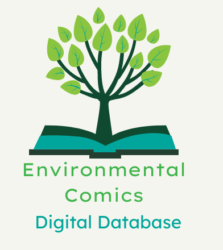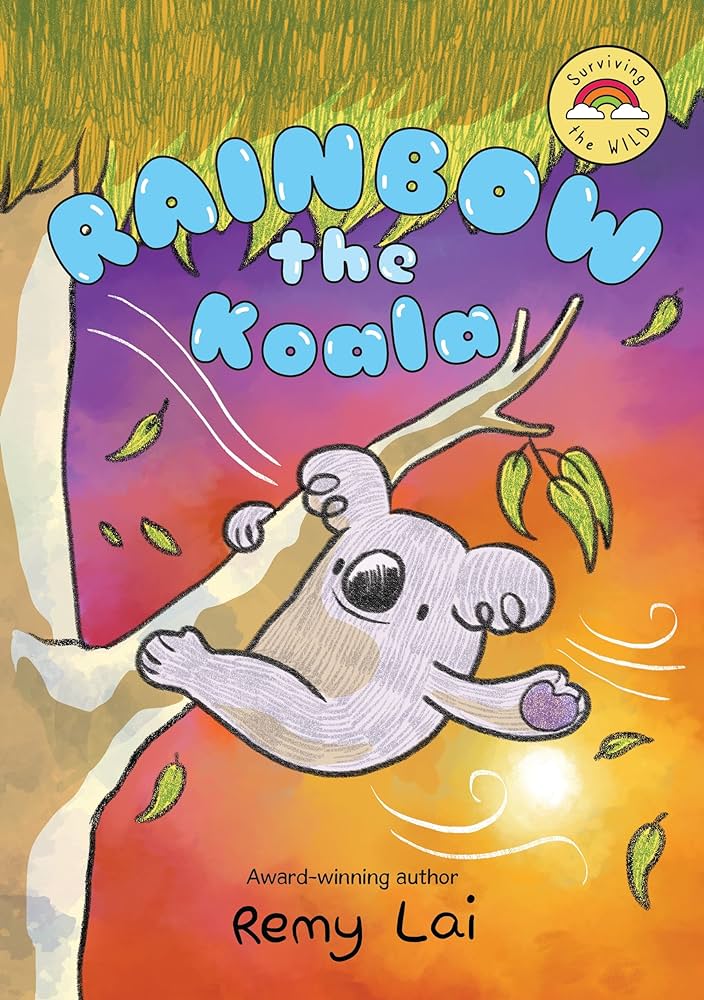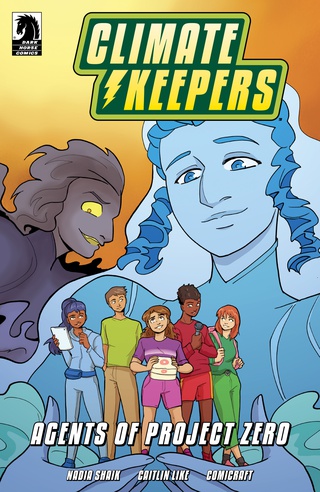“Humans pushed the level of CO2 in my atmosphere over 400 PPM, over the BIG RED LINE. In fact, you put more CO2 in my atmosphere than there has ever been in the last two million years. That’s right. Your best hope for a new planet was in the paws and claws of four experimental, untested animal astronauts” — Planet Earth, AstroNuts Mission One, n. pag.
| Creator(s) | Jon Scieszka (author), Steven Weinberg (illustrator) |
| Publisher | Chronicle Books |
| Publication Date | 2019 |
| Genre | Science Fiction, Animal Comic |
| Environmental Themes and Issues | Climate Change, Anthropomorphism, Pollution |
| Protagonist’s Identity | Nonhuman (Animal) ensemble cast. 2 female and 2 male characters. |
| Protagonist’s Level of Environmental Agency | Level 5: High Environmental Agency and Activism |
| Target Audience | Middle Grade (8 to 12 years) |
| Settings | Outer Space |
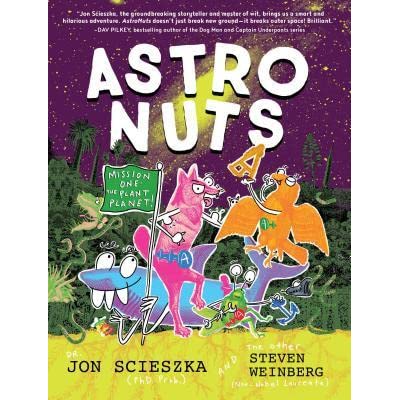
Environmental Themes
Created using a mixture of hand-drawn illustrations and collaged images from the Rijksmuseum, this comedic science fiction comic depicts the outer space explorations of the erroneously named “AstroNuts.” This group consists of four anthropomorphic, talking animals created by Not the National Aeronautics and Space Administration (NNASA): AlphaWolf (a timber wolf), SmartHawk (a broad-winged hawk), LaserShark (a great white shark), and Stinkbug (a dung beetle). Humans have enhanced the animals, giving them special abilities like SmartHawk’s “perfect supersonic space wings” and LaserShark’s electromagnetic laser-shooting tail. Together, the animals travel through the galaxy on their space ship, visiting different “Goldilocks Planets” as they search for the perfect world for humans to resettle after they have destroyed Earth’s environment.
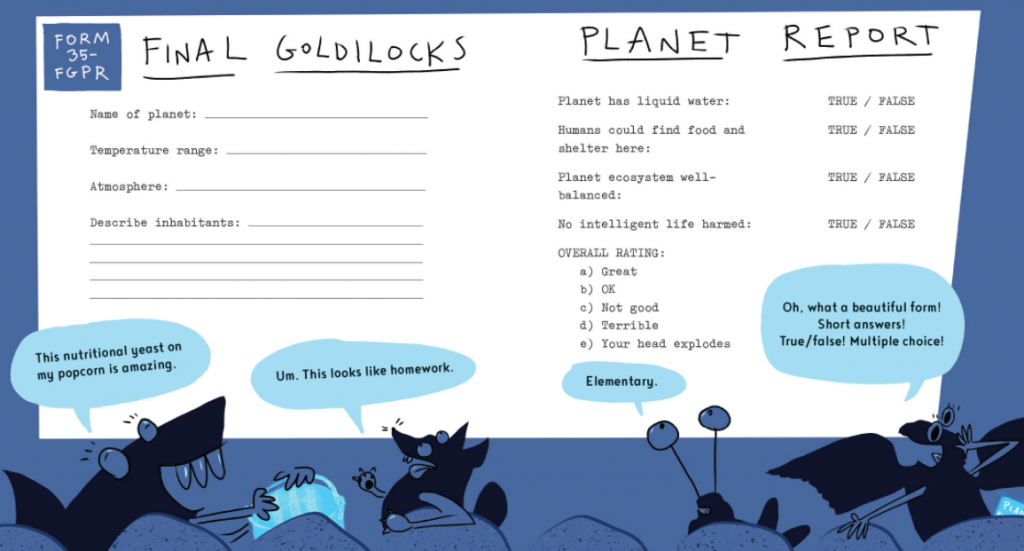
In this first volume of the series, the AstroNuts crash-land on the Plant Planet. The animals work together to evaluate the planet’s suitability: SmartHawk analyzes the local climate, LaserShark searches for food and water, Stinkbug looks at possibilities for shelter, and AlphaWolf seeks to determine if the planet has any intelligent life. Initially, the animals believe that only unintelligent plant life inhabits the Plant Planet. They highlight the lack of discernible animal, bird, and insect life, with SmartHawk contending, “This is a very unbalanced ecosystem” (Scieszka 77). However, giant vines soon attack their spaceship and, after a brief battle, carry the AstoNuts to the Plant Planet Headquarters. There, the animals meet anthropomorphic, intelligent plants, who take them prisoner and force them to work on perfecting the planet even further for plant life. At the climax of the comic, the plant’s Supreme Leader attempts to decapitate the animals with a giant “Headge Clipper” and replace their heads with plant heads. A prolonged battle between the AstroNuts concludes abruptly when StinkBug releases methane, which mixes with the planet’s unbalanced atmosphere and causes an explosion that destroys all plant life on the planet. The animals escape and declare the Plant Planet uninhabitable.
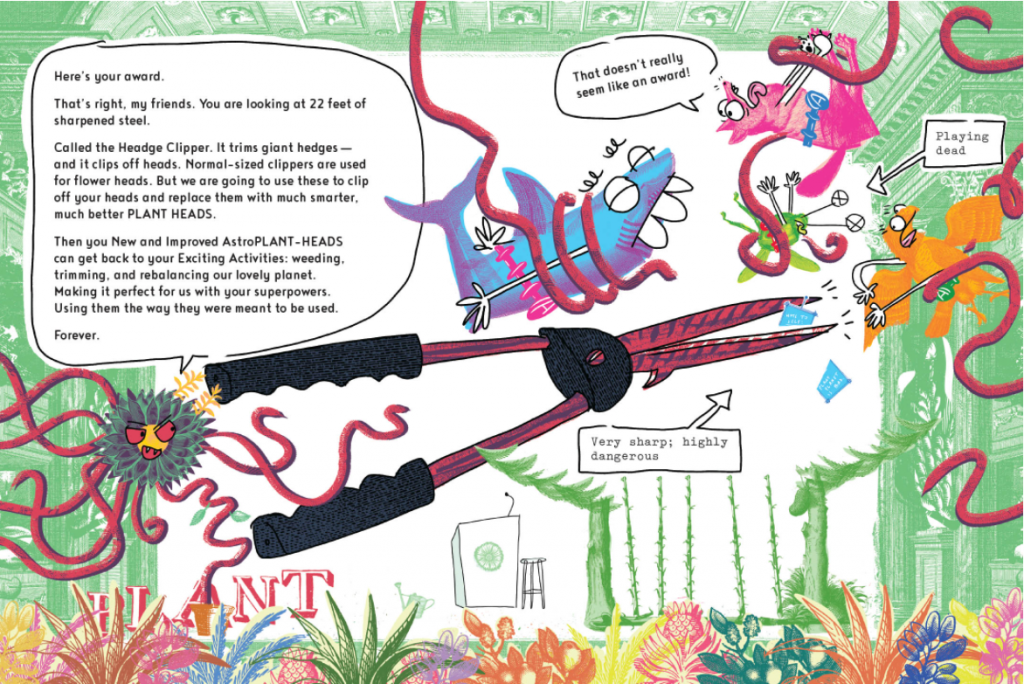
The narrative includes an explicitly pedagogical “Straight Science” interlude from the narrating Planet Earth that warns readers about the dangers of climate change. Describing itself as afflicted with a “Humans-Burning-Fossil-Fuels Flu,” Earth states, “All those hot years, all those ice caps melting, all that ocean rise–those were my signals to you! But you ignored them. So now it’s up to you to figure a way out. You can: a) Burn less fossil fuels or b) Find another planet with air and water and plants and animals, just like me” (Scieszka 97). Additionally, the Earth repeatedly warns the reader that the fate of the Plant Planet demonstrates the negative consequences of one species dominating a planet, just as humans dominate Earth.
A second installment in the series, AstroNuts Mission Two: The Water Planet, was published in 2020.
Paratexts
The comic includes an endnote that attributes the collaged images to the Rijksmuseum and a link to AstroNuts.Space, a website where young readers can create their own collaged comics.
